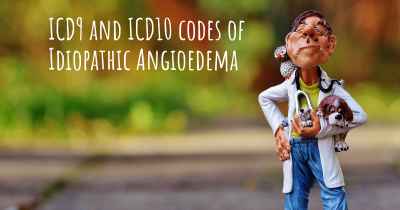What is the history of Idiopathic Angioedema?
When was Idiopathic Angioedema discovered? What is the story of this discovery? Was it coincidence or not?

Idiopathic angioedema is a condition characterized by recurrent episodes of swelling beneath the skin's surface, typically in the face, lips, tongue, throat, and extremities. The term "idiopathic" refers to the fact that the cause of this condition is unknown. Angioedema is a form of urticaria, commonly known as hives, but it affects the deeper layers of the skin.
Historically, the understanding and recognition of idiopathic angioedema have evolved over time. The first documented cases of angioedema date back to the early 19th century, but it wasn't until the late 19th and early 20th centuries that the condition began to be more clearly defined. During this period, physicians started to differentiate angioedema from other forms of swelling and recognized its distinct clinical features.
However, the term "idiopathic angioedema" itself emerged much later. In the mid-20th century, medical professionals began using the term to describe cases of angioedema where the underlying cause could not be identified. This was a significant step in acknowledging that angioedema could occur without an obvious trigger or underlying condition.
Research into idiopathic angioedema has been ongoing, but progress has been challenging due to the lack of a known cause. Over the years, various theories have been proposed to explain the condition, including immune system dysfunction, genetic factors, and hormonal imbalances. However, none of these theories have been definitively proven.
One significant breakthrough in understanding idiopathic angioedema came with the discovery of bradykinin as a key mediator. Bradykinin is a substance that causes blood vessels to dilate and become leaky, leading to swelling. It was found that in some cases of idiopathic angioedema, there is an excessive production or impaired breakdown of bradykinin, resulting in recurrent episodes of swelling.
Advancements in diagnostic techniques have also contributed to the understanding of idiopathic angioedema. Skin biopsies, blood tests, and imaging studies have helped rule out other potential causes of angioedema and provide more accurate diagnoses. Additionally, the development of specialized tests to measure bradykinin levels has improved the ability to identify cases of bradykinin-mediated angioedema.
Treatment options for idiopathic angioedema have evolved over time as well. Initially, management primarily focused on symptomatic relief through antihistamines and corticosteroids. However, these treatments were often ineffective in preventing recurrent episodes. With the discovery of bradykinin's role, targeted therapies such as bradykinin receptor antagonists and inhibitors of bradykinin breakdown have been developed, offering more effective options for some patients.
Despite these advancements, challenges remain in the management of idiopathic angioedema. The unpredictable nature of the condition and the lack of a known cause make it difficult to prevent or predict episodes. Additionally, not all cases of idiopathic angioedema are bradykinin-mediated, further complicating treatment approaches.
Research efforts continue to unravel the mysteries surrounding idiopathic angioedema. Ongoing studies aim to identify potential genetic markers, immune system abnormalities, and other factors that may contribute to the development of the condition. The hope is that a better understanding of the underlying mechanisms will lead to more targeted and effective treatments in the future.








